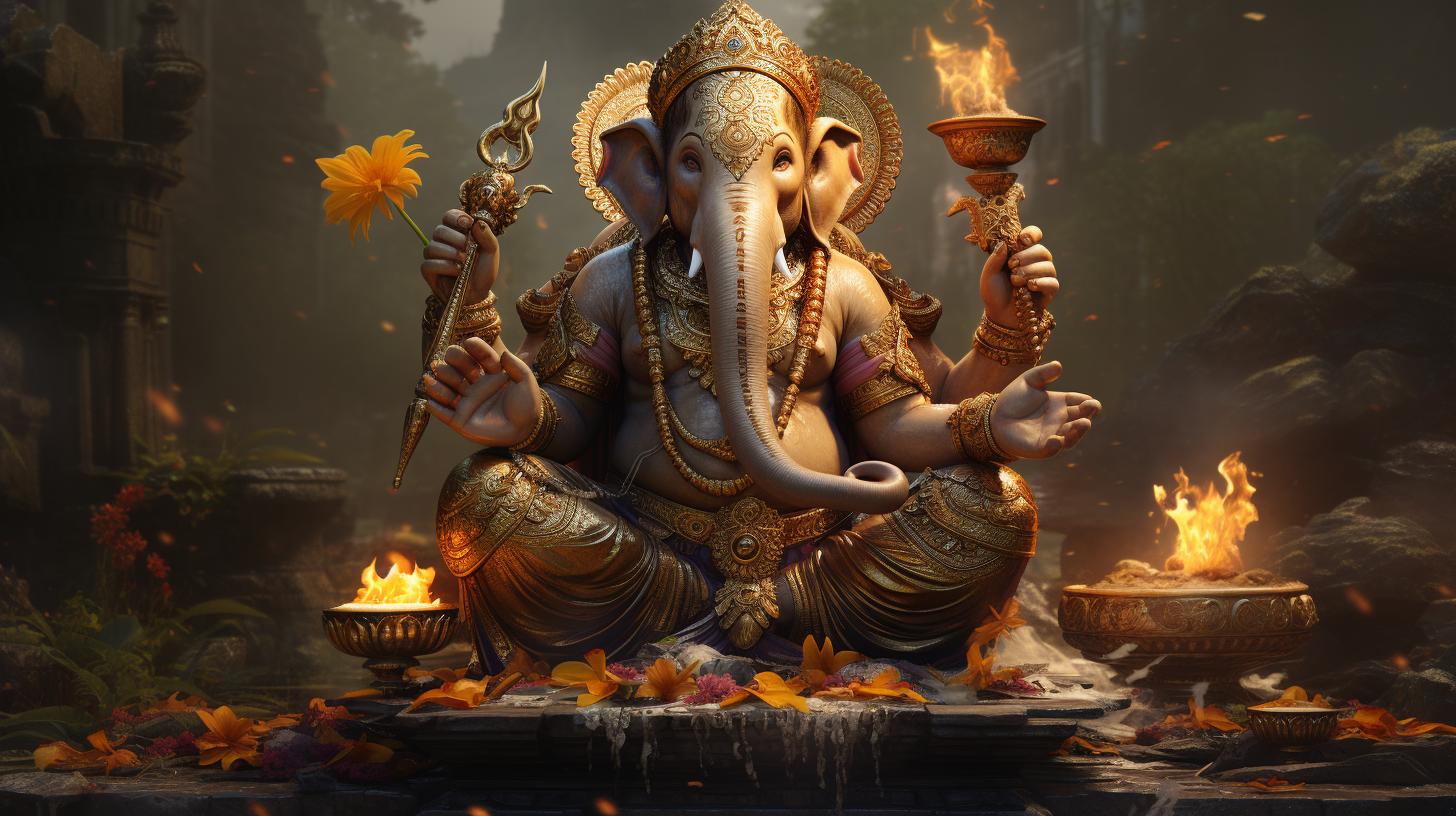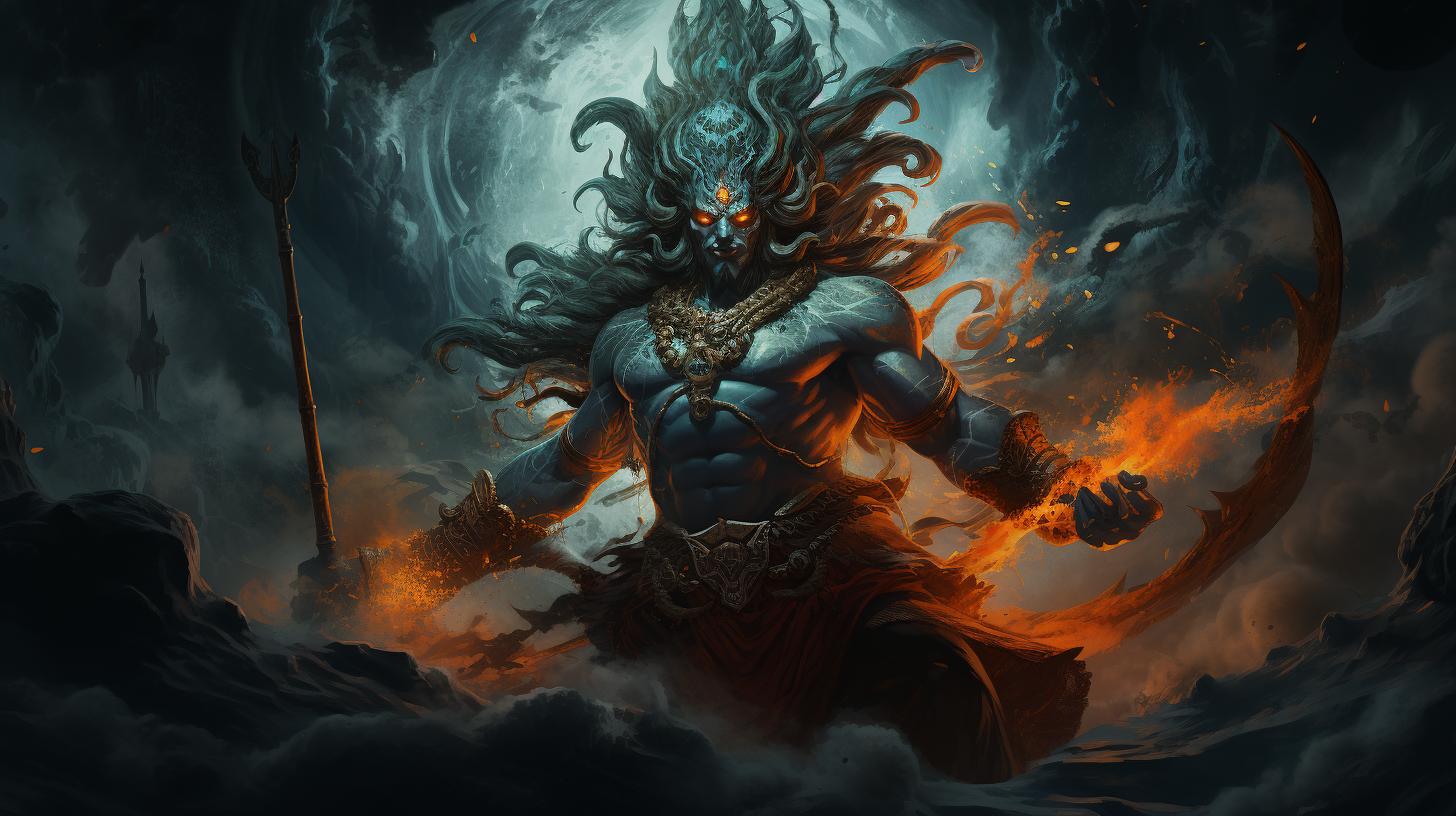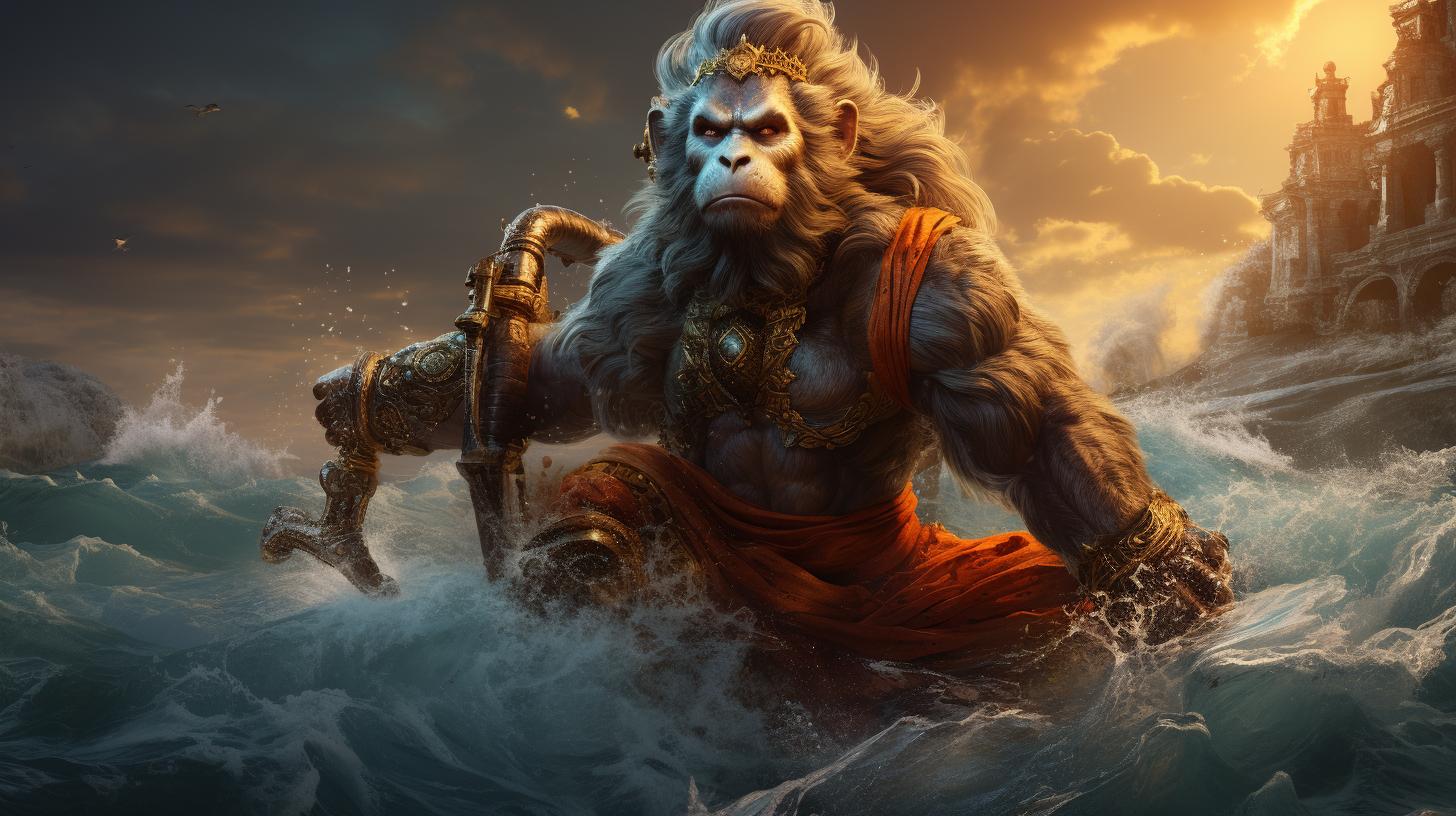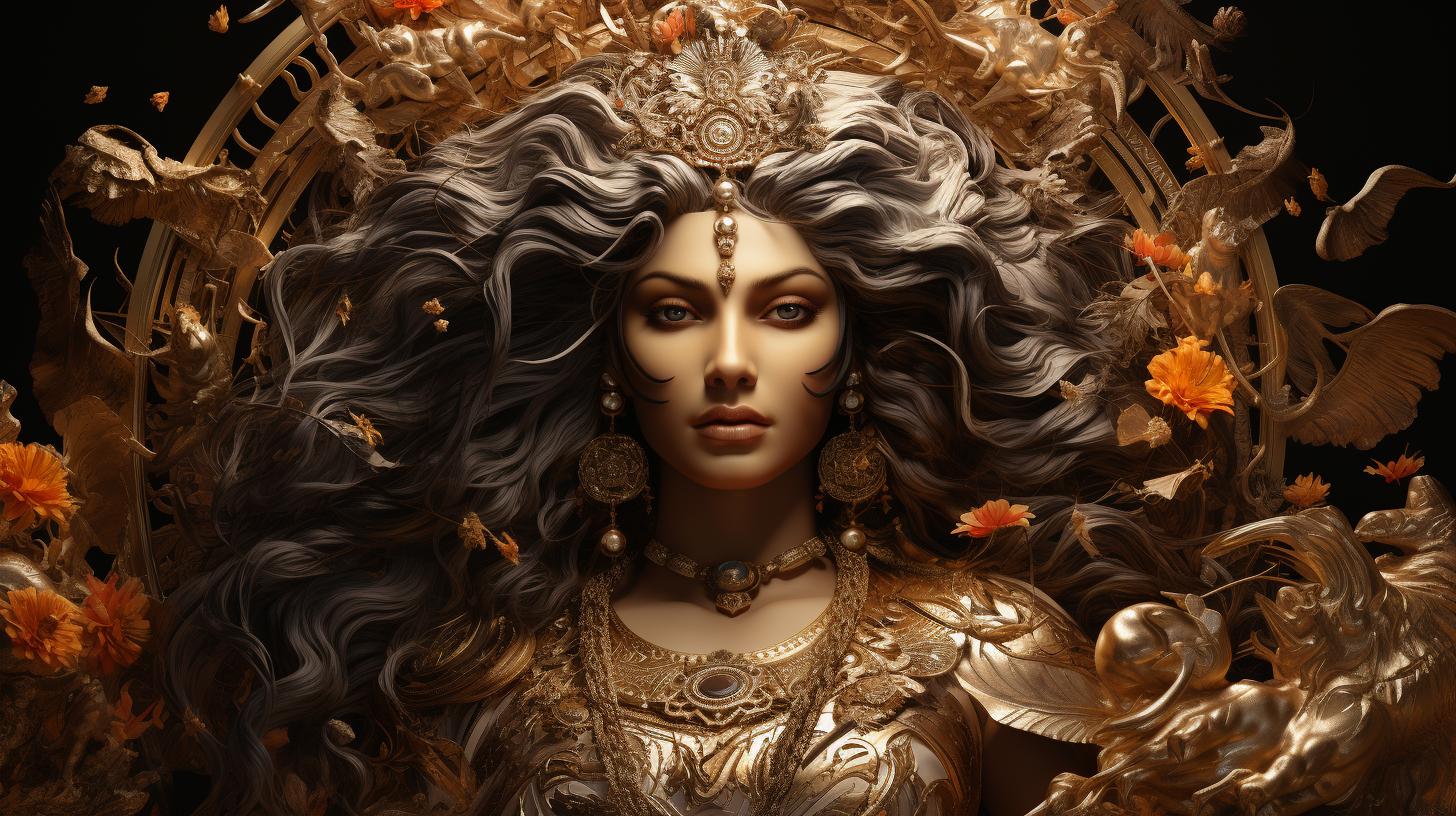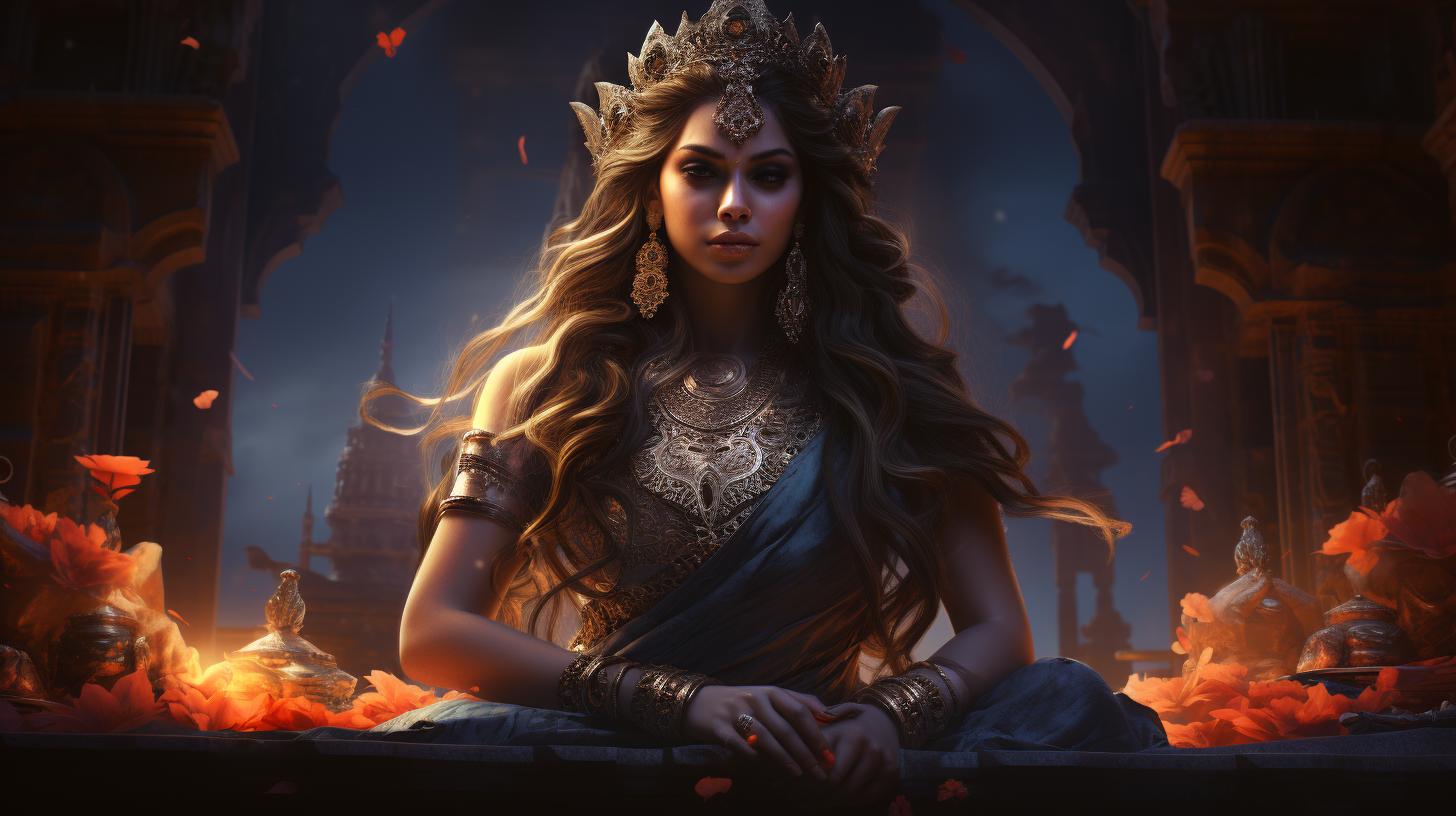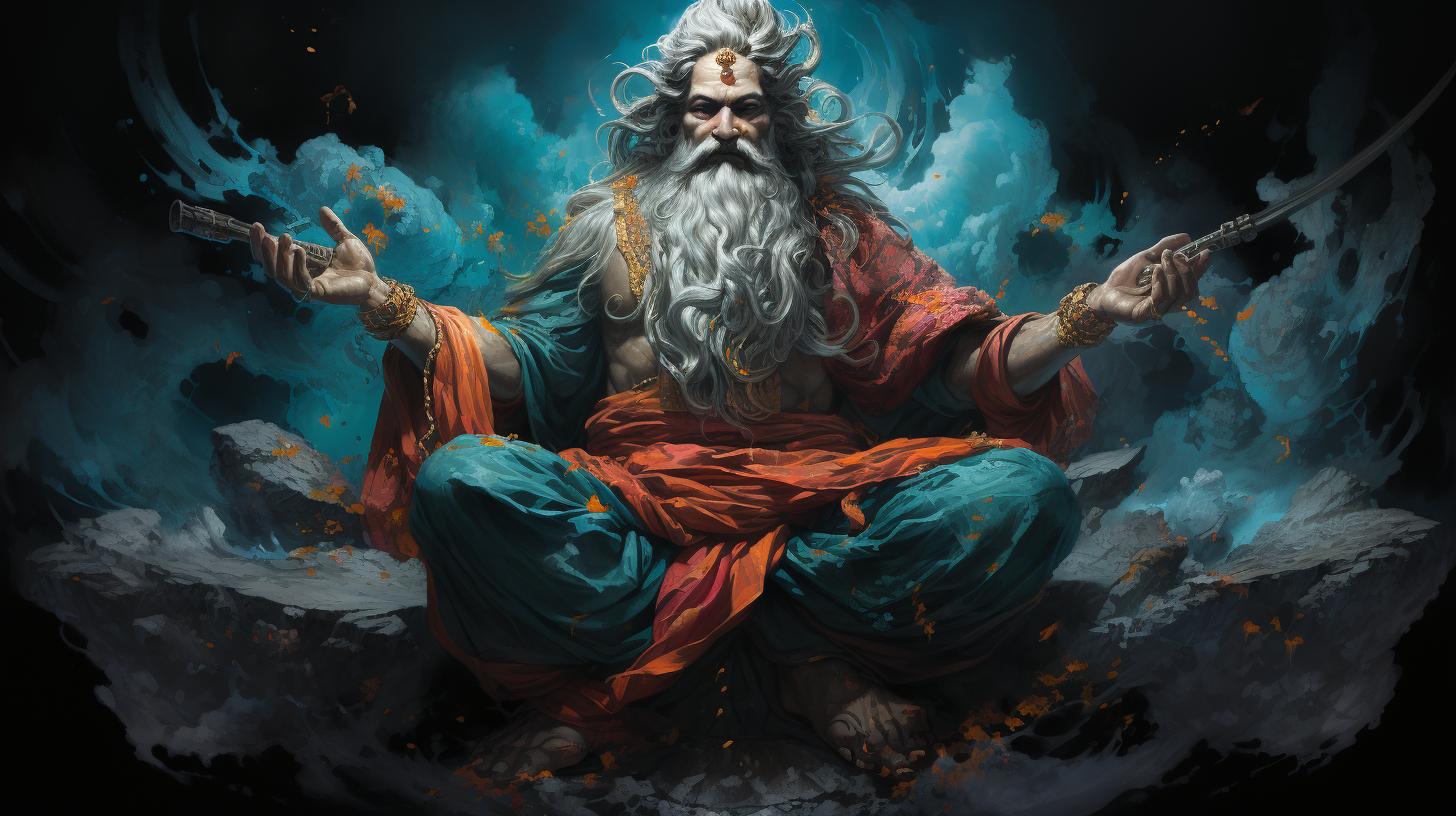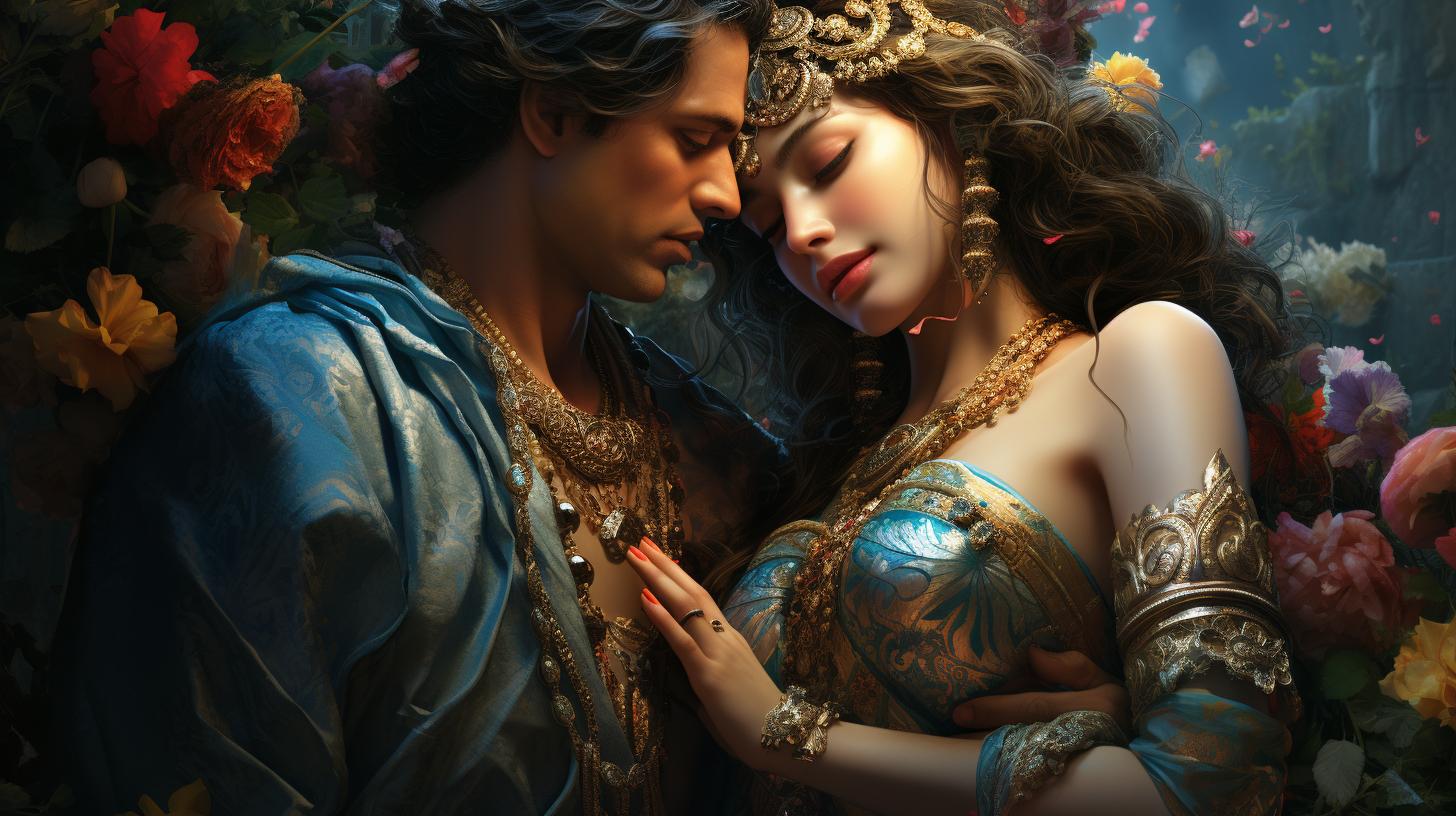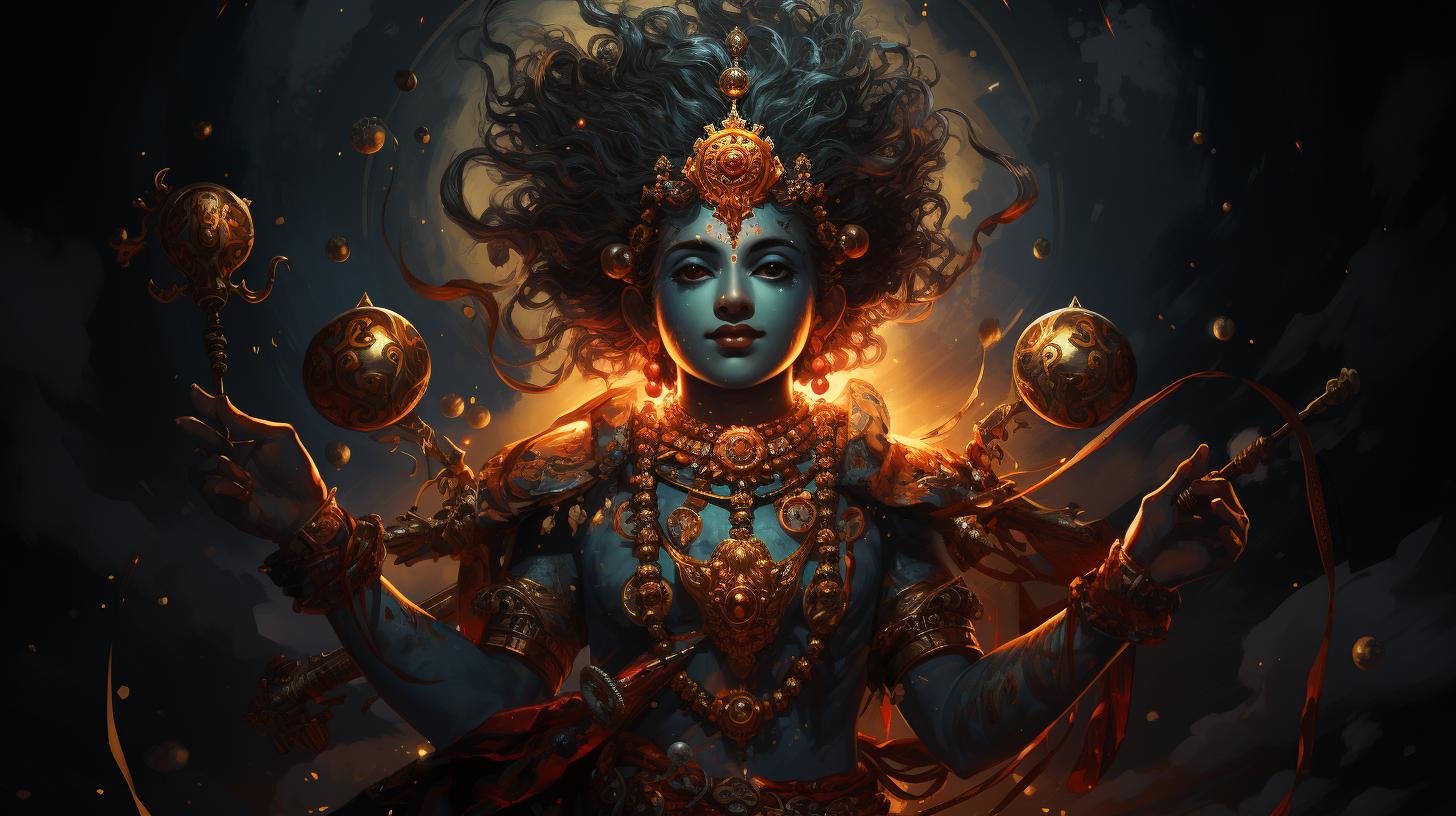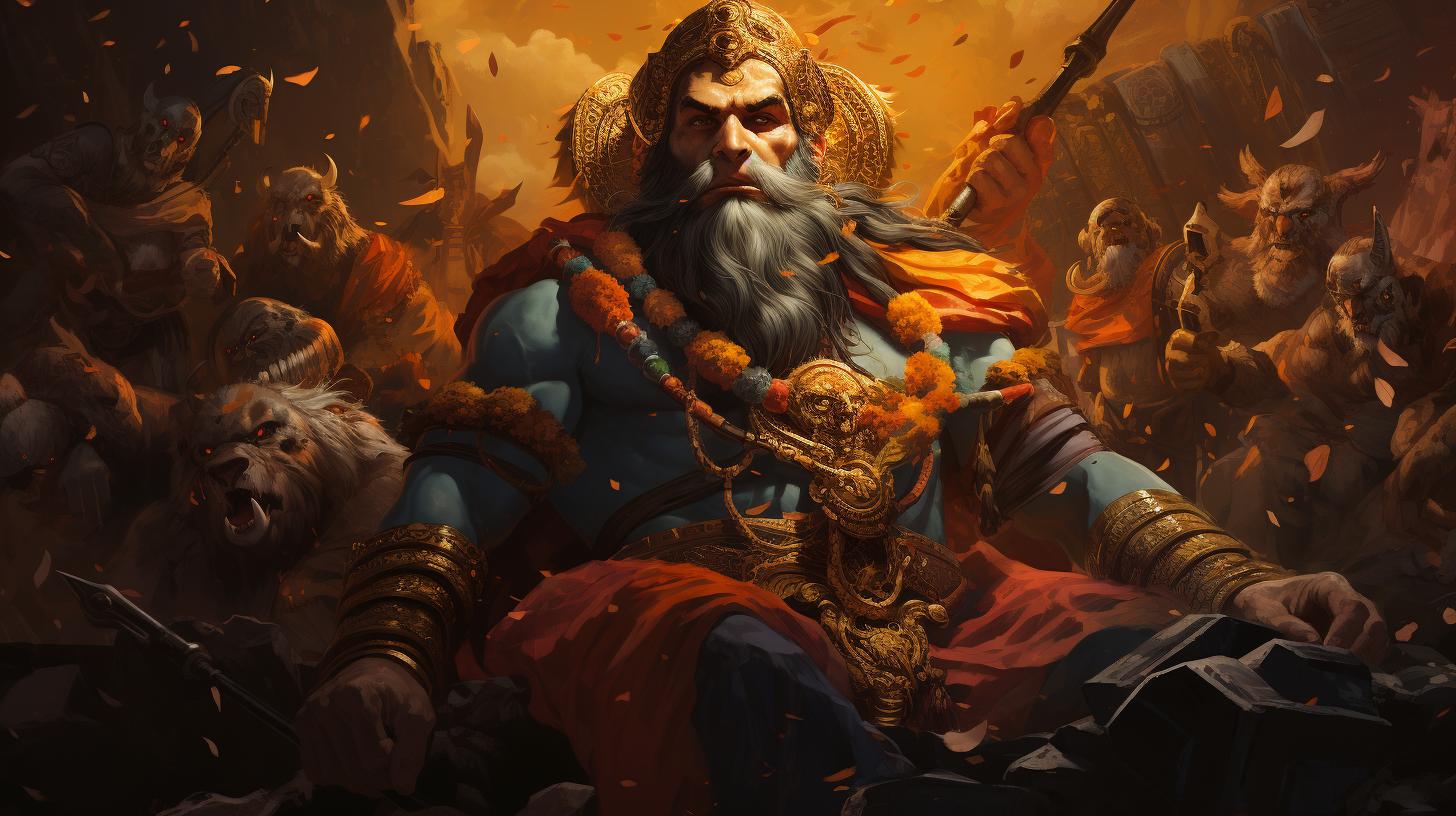‘Indian God Ganesha Story: Mythology and Symbolism Explained’
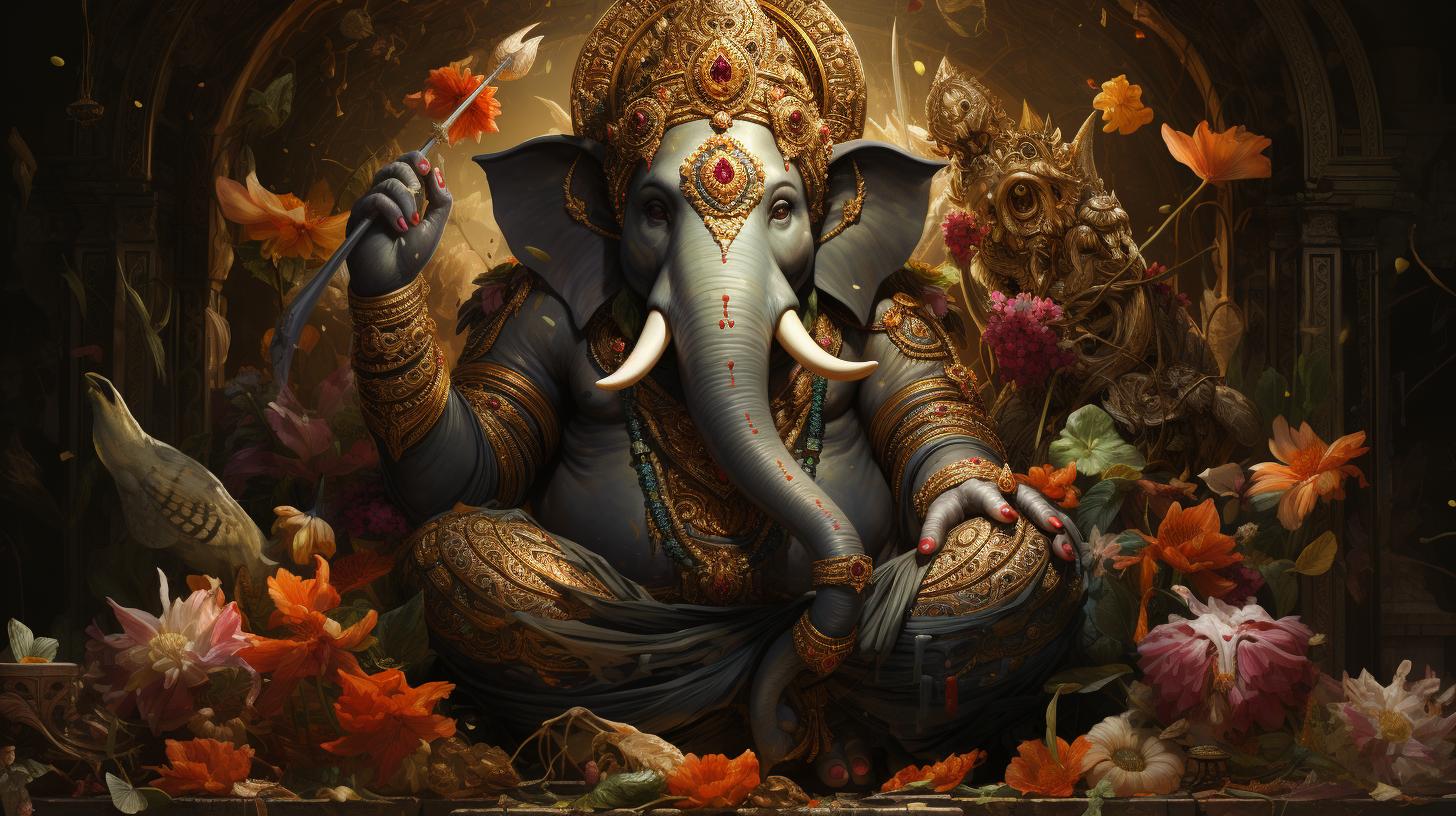
The Indian god Ganesha, known for his elephant head and human body, holds a significant place in Hindu mythology. This deity represents symbolism and serves as a remover of obstacles.
Associated with knowledge and wisdom, Ganesha is worshipped widely in India and Southeast Asia. Festivals like Ganesh Chaturthi celebrate his presence, while famous temples and pilgrimage sites attract devotees. Ganesha’s role in contemporary Hinduism remains strong, reflecting devotion and a guiding force in daily life.
Let’s explore the intriguing stories and cultural significance of Indian god Ganesha.
Mythology and Origins
Ganesha, a revered deity in Hindu mythology, has a rich and fascinating history that spans centuries. This section explores the origins of Ganesha, shedding light on his birth, his role as the son of Shiva and Parvati, and the symbolism and significance associated with him.
The Birth of Ganesha
According to Hindu mythology, the birth of Ganesha is a captivating tale. One version of the story portrays Goddess Parvati creating Ganesha out of clay and giving him life to guard her while she bathed.
When Lord Shiva returned and found Ganesha guarding the entrance, a confrontation ensued, resulting in Shiva severing Ganesha’s head. This unfortunate incident led to a series of events that culminated in Ganesha receiving an elephant head and being restored to life.
Ganesha as the Son of Shiva and Parvati
Ganesha’s parentage is attributed to Lord Shiva, the destroyer, and Goddess Parvati, the divine mother. Their union symbolizes the importance of balance between the male and female energies in the Hindu pantheon.
Ganesha is often depicted as the beloved son of Shiva and Parvati, embodying their combined qualities of power, wisdom, and compassion.
Symbolism and Significance of Ganesha
Ganesha carries profound symbolism and holds immense significance in Hindu culture. His elephant head represents wisdom, intelligence, and memory. The large ears symbolize the importance of active listening and receptivity, while the trunk signifies adaptability and the ability to overcome obstacles.
Ganesha’s broken tusk symbolizes sacrifice and the importance of letting go of ego. His association with the removal of obstacles and granting of blessings makes him a beloved deity among Hindus.
Depictions and Forms of Ganesha
Ganesha, the beloved Indian god, is represented in various forms and depictions that showcase his unique and iconic features. Let’s explore the popular representations, the symbolism behind Ganesha’s elephant head and human body, and other distinctive attributes associated with this deity.
Popular Representations of Ganesha
- Standing Ganesha: This form depicts Ganesha in a standing posture, often with four arms, holding symbolic objects such as a lotus, an axe, a noose, and a modaka (sweet offering).
It represents his power and ability to remove obstacles.
- Sitting Ganesha: In this representation, Ganesha is seated in a relaxed position, with one leg folded and the other resting on the ground.
This form emphasizes his calm and peaceful nature.
- Dancing Ganesha: Known as Nritya Ganapati, the dancing form of Ganesha symbolizes joy, celebration, and the rhythm of life. He is portrayed in a dynamic pose, with one leg raised and various dance mudras (hand gestures).
Ganesha’s Elephant Head and Human Body
Ganesha’s most recognizable feature is his elephant head atop a human body.
This unique fusion symbolizes the perfect balance between intelligence and strength. The elephant head represents wisdom, knowledge, and memory, while the human body signifies the earthly and mortal aspects of Ganesha’s existence.
Other Symbolic Attributes of Ganesha
In addition to his distinctive appearance, Ganesha is often depicted with several symbolic attributes:
- Big Ears: Ganesha’s large ears symbolize his ability to listen attentively to the prayers and pleas of his devotees, providing them with guidance and support.
- Trunk: The trunk, a prominent feature of Ganesha, represents adaptability, flexibility, and resourcefulness.
It signifies the power to overcome obstacles and accomplish goals.
- Broken Tusk: Ganesha is often portrayed with a broken tusk, which symbolizes sacrifice and the importance of letting go of attachments to attain greater wisdom.
The intact tusk represents the preservation of knowledge.
These various forms and symbolic attributes of Ganesha showcase the depth and richness of the Indian god’s representation, conveying messages of wisdom, strength, and divine guidance to his worshippers.
Ganesha in Hindu Mythology
Ganesha’s Role in Hindu Epics
Ganesha is often depicted as a loyal and dutiful son, known for his wisdom and intellect. In the epic Mahabharata, he is portrayed as a scribe who transcribes the story dictated by the sage Vyasa.
Ganesha’s role in this epic showcases his importance as a patron of learning and education.
Ganesha’s Association with Shiva and Parvati
As the son of Lord Shiva and Goddess Parvati, Ganesha has a special relationship with his divine parents. He is considered their beloved child and an emblem of their love and unity.
Ganesha’s association with Shiva and Parvati symbolizes the ideal familial bond and highlights his place within the Hindu pantheon.
Stories and Legends about Ganesha
Numerous stories and legends revolve around Ganesha, providing insight into his character and adventures. One well-known tale is the story of how Ganesha got his elephant head, which involves an encounter with Lord Shiva and a humorous turn of events.
These stories not only entertain but also impart moral and spiritual lessons, showcasing Ganesha’s multifaceted persona.
- Story of Ganesha’s Birth
- Ganesha’s Elephant Head and the Broken Tusk
- Ganesha and the Moon-Cursing Incident
- Endearing Childhood Stories of Ganesha
Festivals and Celebrations Dedicated to Ganesha
Ganesha, the beloved Indian god, is honored and celebrated through various festivals and rituals. These events are marked by vibrant colors, joyous rituals, and deep spiritual significance. Let’s explore some of the prominent festivals and celebrations dedicated to Ganesha.
Ganesh Chaturthi: The Annual Festival
Ganesh Chaturthi is an eagerly awaited annual festival commemorating Ganesha’s birth. It is celebrated with immense enthusiasm across India and in Hindu communities around the world. The festival usually falls in the months of August or September, lasting for ten days.
During this time, beautifully crafted Ganesha idols are installed at homes and public pandals (temporary structures). Devotees offer prayers, perform aarti (ritual worship with lamps), and sing devotional songs. The festival concludes with grand processions and the immersion of Ganesha idols in rivers, symbolizing his return to Mount Kailash.
Rituals and Traditions during Ganesh Chaturthi
Ganesh Chaturthi is marked by a series of rituals and customs. The festivities begin with the installation of the Ganesha idol, accompanied by Vedic chants and spiritual invocations. Devotees offer flowers, fruits, sweets, and modak (a traditional sweet dumpling).
Throughout the ten days, the idol is worshipped daily, and elaborate rituals are performed, including the recitation of sacred texts and the singing of devotional hymns. On the last day, Ganesha is bid farewell with immense love and reverence during the visarjan (immersion) ceremony.
Ganesha in Other Hindu Festivals
Apart from Ganesh Chaturthi, Ganesha’s presence can be witnessed in various other Hindu festivals. For instance, he is worshipped at Diwali, the Festival of Lights, where his blessings are sought for prosperity and success.
Ganesha is also invoked at the beginning of important ceremonies and marriages, as he is believed to bring good fortune and remove obstacles. Furthermore, during Navaratri (Nine Nights), Ganesha is revered alongside other deities like Durga, Lakshmi, and Saraswati, symbolizing his integral role in the Hindu pantheon.
Ganesha across India and Southeast Asia
Ganesha, the Indian god with an elephant head and human body, holds great significance and is worshipped in various regions of India and Southeast Asia. This section explores the diverse worship practices, cultural influence, and spread of Ganesha’s worship across these regions.
Ganesha Worship in Different Regions of India
In India, Ganesha is worshipped in different regions with unique rituals and traditions. In Maharashtra, the state where Ganesha Chaturthi originated, the festival is widely celebrated with grandeur and fervor. In Tamil Nadu, Ganesha, known as Pillaiyar, is revered with ‘Modakam’ as an offering.
In Karnataka, the 10-day festival of Ganesha Chaturthi witnesses elaborate processions and immersion of Ganesha idols in rivers or lakes. These regional variations reflect the diverse cultural fabric of India and the prominence of Ganesha in religious practices.
Ganesha in Southeast Asian Cultures
Ganesha’s influence extends beyond India and has permeated Southeast Asian cultures. In countries like Thailand, Cambodia, and Indonesia, Ganesha is known as Phra Phikanet, Ganesha, or Heramba respectively. Statues and images of Ganesha can be found in temples and shrines, depicting the cultural amalgamation of Hinduism with local customs and beliefs.
Southeast Asian cultures have embraced Ganesha as a symbol of prosperity, wisdom, and protection.
Cultural Influence and Spread of Ganesha Worship
The worship of Ganesha has transcended geographical boundaries and reached communities across the globe. In the Indian diaspora, Ganesha festivals are celebrated with great enthusiasm and participation. The cultural influence of Ganesha can be seen in art, music, dance, and literature, where his iconic form and symbolism are depicted and celebrated.
Furthermore, numerous Ganesha temples have been established outside India, becoming centers of religious and cultural activities.
Ganesha Temples and Pilgrimages
Ganesha, the revered Indian god, has a special connection with temples and pilgrimages across India. These sacred sites are dedicated to worshipping Ganesha and attracting devotees from far and wide.
Let’s explore some of the famous Ganesha temples in India, the significance of pilgrimages for devotees, and the connections Ganesha shares with other Hindu temples.
Famous Ganesha Temples in India
India is dotted with numerous temples dedicated to Lord Ganesha, each with its unique beauty and historical significance. Some of the famous Ganesha temples include:
- Siddhivinayak Temple in Mumbai, Maharashtra: This iconic temple attracts millions of devotees every year and is believed to fulfill desires and grant blessings.
- Kashi Vishwanath Temple in Varanasi, Uttar Pradesh: Located near the Kashi Vishwanath Temple, the Ganesha temple here is visited by pilgrims before the main deity’s darshan.
- Rockfort Ucchi Pillayar Temple in Tiruchirappalli, Tamil Nadu: Situated atop a hill, this temple dedicated to Ganesha offers mesmerizing views of the city.
Pilgrimage Sites and Importance for Devotees
Devotees undertake pilgrimages to Ganesha temples to seek his blessings, guidance, and to express their devotion.
These pilgrimages hold immense significance in their spiritual journey and offer a chance to connect with Ganesha on a deeper level. The pilgrims participate in various rituals, such as offering prayers, reciting devotional songs, and performing sacred ceremonies, to express their reverence.
Ganesha’s Connection to Other Hindu Temples
Lord Ganesha often finds his presence in other Hindu temples as well. Many temples dedicated to different deities have a separate shrine for Ganesha, considering him as the remover of obstacles and the one who can grant success and fulfillment in their respective endeavors.
It is common to find Ganesha idols placed at the entrances of Hindu temples, symbolizing his role as the guardian and protector.
Ganesha’s Role in Contemporary Hinduism
Ganesha plays a significant role in contemporary Hinduism, where devotion and worship of this beloved deity are widespread. Followers of Hinduism express their reverence towards Ganesha through various rituals and practices, recognizing his divine qualities and seeking his blessings for success, prosperity, and the removal of obstacles in their lives.
Devotion and Worship of Ganesha
Devotees of Ganesha engage in dedicated worship, offering prayers and performing puja, a ceremonial act of reverence. This devotion is exemplified through regular visits to Ganesha temples, personal altars adorned with his idols, and the chanting of sacred mantras in his honor.
Devotees often observe fasts and conduct special ceremonies on auspicious occasions associated with Ganesha.
Ganesha’s qualities of wisdom, intellect, and benevolence make him a beloved figure for students, scholars, and seekers of knowledge.
Many educational institutions and study spaces have Ganesha idols or symbols, creating an atmosphere conducive to learning and invoking his blessings for academic pursuits.
Ganesha’s Presence in Daily Life
Ganesha’s presence extends beyond the confines of temples and rituals, permeating into the daily lives of his devotees. His images are commonly found in homes, workplaces, and even vehicles, acting as a reminder of his divine guidance and protection.
People often begin their activities by invoking Ganesha’s blessings, seeking his assistance in overcoming obstacles and ensuring success in their endeavors. From simple tasks to significant milestones, Ganesha is believed to grant his devotees the strength and wisdom necessary to navigate life’s challenges.
Ganesha and the Modern Hindu Identity
In the modern context, Ganesha symbolizes both tradition and adaptability. His inclusive nature transcends cultural boundaries and his relevance extends beyond religious practices. Ganesha is considered a unifying figure, embodying the qualities of love, compassion, and understanding among people.
As Hindu communities have spread across the world, Ganesha has become an emblem of cultural identity and a bridge between different societies. The popularity of Ganesh Chaturthi, a festival dedicated to Ganesha, has grown globally, showcasing the widespread admiration for this deity and his stories.
Ganesha’s presence in contemporary Hinduism reflects the enduring influence of mythology, symbolizing the pursuit of knowledge, the importance of devotion, and the belief in the power of perseverance and resilience. As Hinduism continues to evolve, Ganesha remains an integral part of the spiritual fabric, guiding and inspiring millions with his divine wisdom and benevolence.
- Ganesha’s timeless teachings and his role in inspiring seekers of knowledge
- How Ganesha’s symbolism connects with daily life challenges and aspirations
- Exploring the inclusive nature of Ganesha as a unifying figure in modern society
- The global influence of Ganesh Chaturthi and its celebration beyond India
- The enduring significance of Ganesha’s presence in contemporary Hinduism
Symbolic Interpretations of Ganesha
Symbolism plays a significant role in understanding the multifaceted nature of Ganesha.
This section explores the symbolic interpretations associated with Ganesha, shedding light on his profound significance.
Ganesha as the Remover of Obstacles
Ganesha is widely revered as the remover of obstacles. His elephant head represents wisdom, intelligence, and foresight, while his human body signifies strength and adaptability. Devotees believe that by seeking Ganesha’s blessings and guidance, they can overcome challenges in their lives, both physical and spiritual.
His iconic broken tusk symbolizes sacrifice, reminding us that sometimes we need to let go of certain things to overcome obstacles.
Ganesha’s Association with Knowledge and Wisdom
Ganesha is considered the embodiment of knowledge and wisdom. The large ears of Ganesha signify his ability to listen attentively, promoting effective communication and understanding. His association with books and scriptures portrays his deep-rooted connection to intellectual pursuits.
Devotees seek Ganesha’s blessings to attain wisdom, enhance their educational pursuits, and overcome ignorance.
Ganesha as a Guide and Protector
In Hindu mythology, Ganesha is hailed as a guide and protector. His prominent position as Parvati and Shiva’s son suggests his role as a guardian of dharma (righteousness) and a defender against evil forces.
Devotees turn to Ganesha for guidance, seeking his divine protection in their endeavors, whether it be personal or professional. Ganesha’s reputation as the Lord of Beginnings also makes him a patron of new ventures and a source of inspiration.
..

